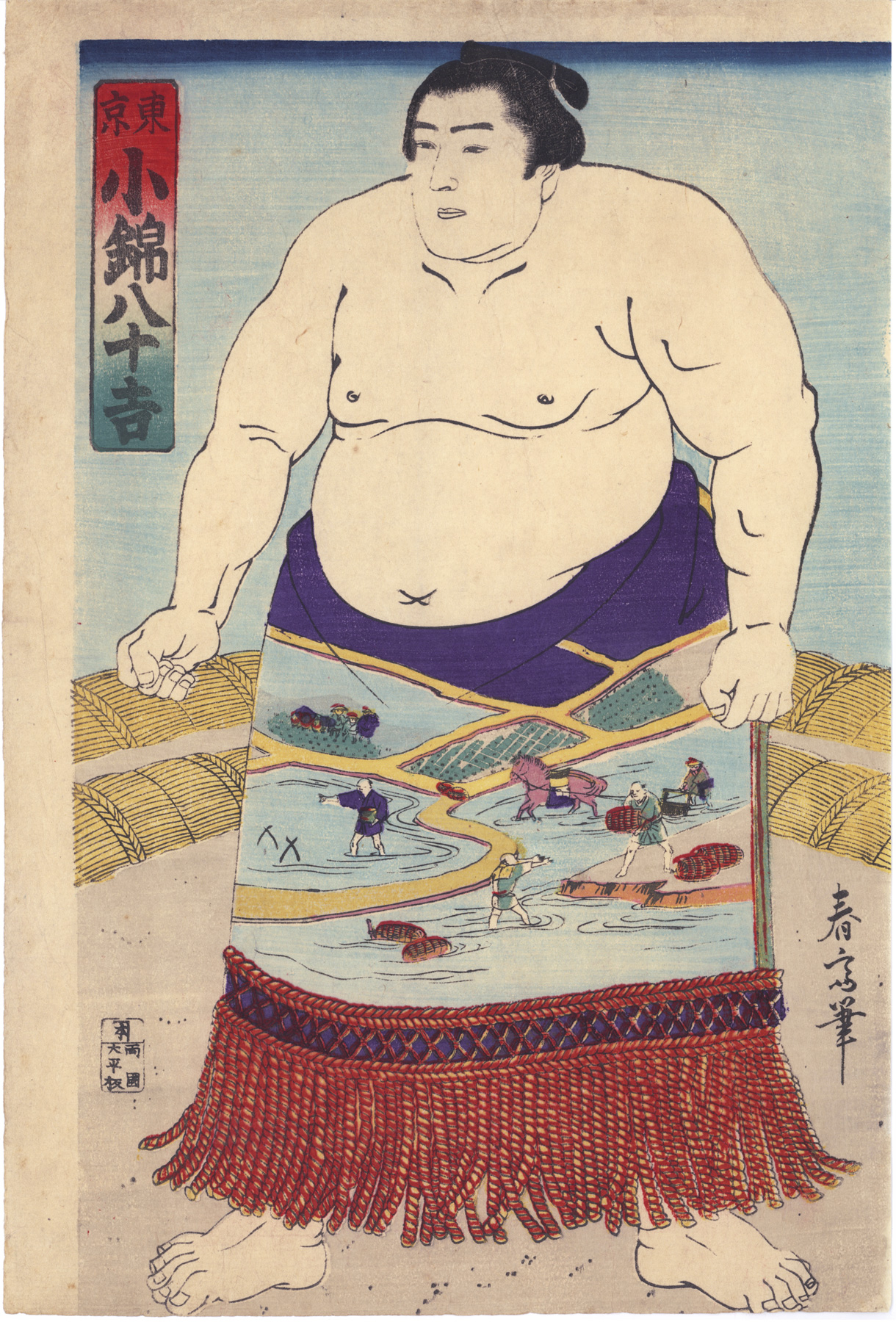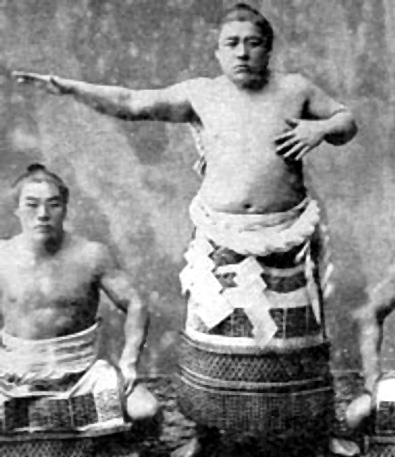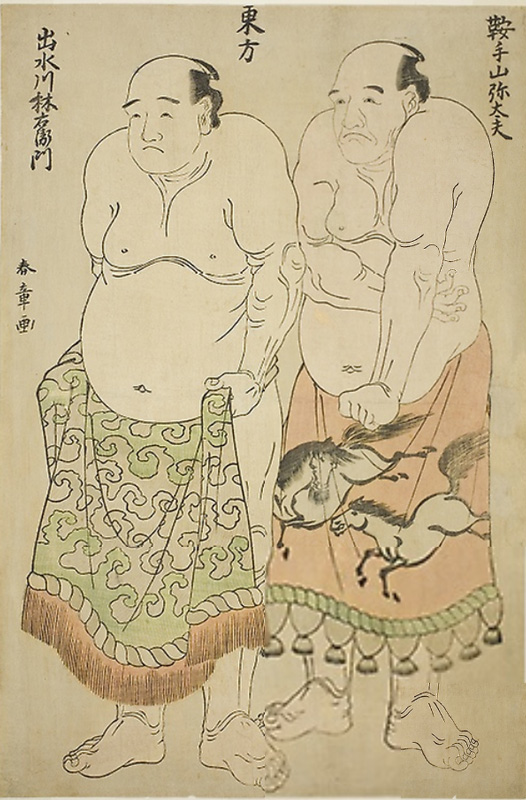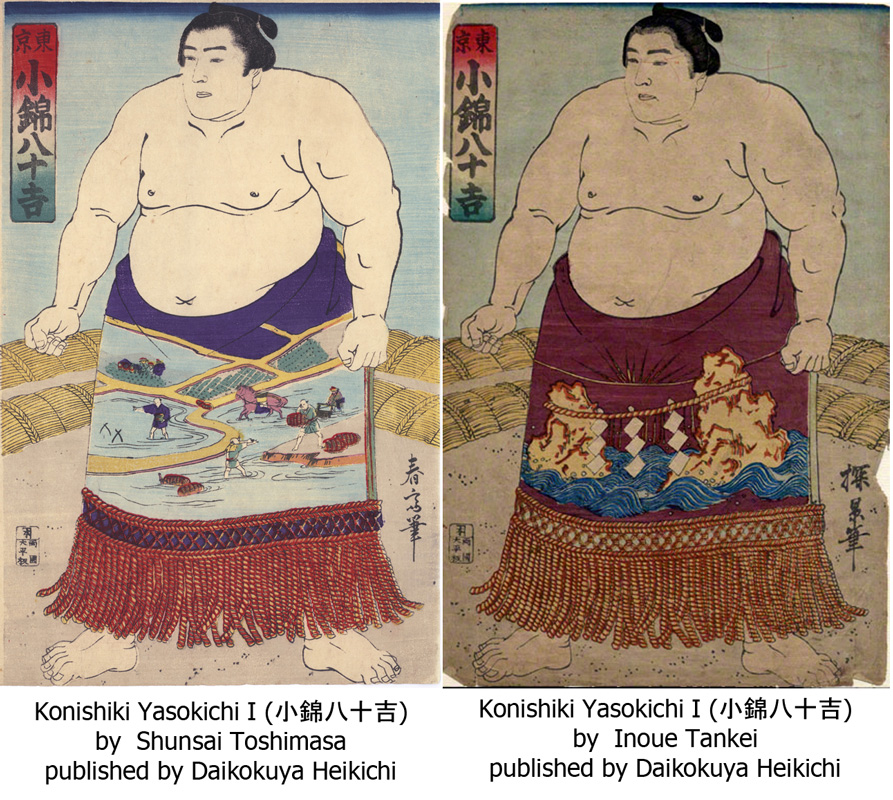About This Print
| click on image to enlarge Sumo Wrestlers of the Eastern Group: Kurateyama Yadayu (right), and Izumigawa Rin-‘emon (left), c. 1780 Katsukawa Shunshō 勝川春章 source: Art Institute Chicago 1959.594 | Woodblock prints picturing the sport and individual sumō wrestlers date to the 1770s, to the artist Katsukawa Shunshō (1726-1792) and his followers (the "school" of Katsukawa.) (See image left.) An impressive part of sumō-e are their depictions of the kesho-mawashi (ceremonial brocaded aprons) worn by wrestlers. These aprons, originally bestowed by daimyō upon the professional wrestlers they retained as a "badge of accomplishment," became increasingly splendid in appearance as daimyō competed with each other in this display of ornamental finery used in classical sumō ritual in the ring. In the late 1820s, the dominant school for sumō-e became that of Utagawa Kunisada's (1786-1865). It is estimated that Kunisada alone designed over 700 sumō-e.1 As Japan entered the Meiji Era in 1868 and the daimyō lost much of their wealth and power, sumō lost sponsorship. In addition, its ritual and violence was seen by many in the new government as being incompatible with the adoption of Western customs and institutions. Sumō would go into decline up until its resurrection by Emperor Meiji in 1884, when he called for an imperial tournament, leading to its resurgence. The sumō prints by Toshimasa, which do not carry a date, can be dated from this time of resurgence until the last gasps of ukiyo-e in the early 1900s. |
1 http://www.kunisada.de/Kunisada-Sumo/Sumo.htm
Same Wrestler, Same Publisher, Different Artist
Different Kesho-mawashi
Print Details
| IHL Catalog | #1899 |
| Title or Description | Tokyo, Konishiki Yasokichi 東京 小錦八十吉 |
| Artist | Utagawa (Shunsai) Toshimasa (1866-1913) |
| Signature |  |
| Seal | no seal |
| Publication Date | not dated - between 1884 and 1889. The wrestler depicted in this print, Konishiki Yasokichi I, madehis professional debut in May 1883 and retired in January 1901. In May 1894, Emperor Meiji called for an imperial tournament resurrecting the sport. The publisher of this print, Daikokuya Heikichi, also published another printof Konishiki, identical to the Toshimasa print of Konishiki with the exception of adifferent keshō-mawashi (ceremonial aprons), which carries the signature of the artistInoue Tankei (Inoue Yasuji) who died in 1889. The above indicate a production date for this print of between 1884 and 1889. This print has been dated by other to between 1870 and 1875, likely based on the particular Daikokuya publisher seal used, but this date is not consistent with the above information and and the use of an older seal on a print is not unheard of. |
| Publisher | 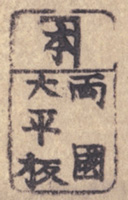 seal reading: 本 両国大平板 hon Ryōgoku Daihei han [Marks: pub. ref. 029; seal ref. 22-094] |
| Carver | not shown on print |
| Impression | excellent |
| Colors | excellent |
| Condition | good - not backed; full size; paper wrinkling throughout |
| Genre | ukiyo-e; sumo-e |
| Miscellaneous | |
| Format | vertical oban |
| H x W Paper | 14 1/4 x 9 1/2 in. (36.2 x 24.1 cm) |
| H x W Image | 13 13/16 x 8 3/4 in. (35.1 x 22.2 cm) |
| Literature | |
| Collections This Print | Fine Arts Museum of San Francisco 1963.50.5607 |
last revision:
5/1/2020 created


